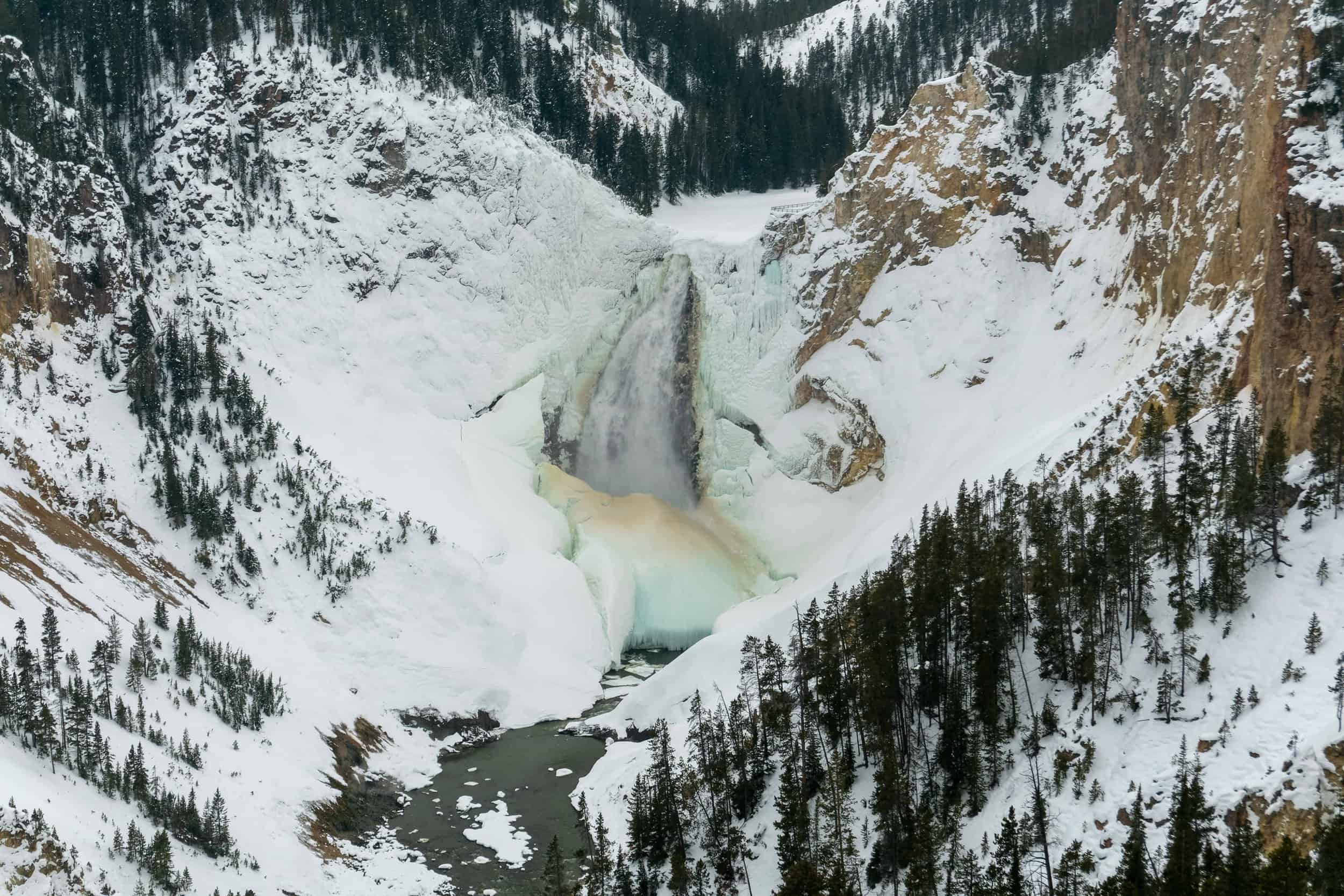Read The
Current Issue
Yurting in Yellowstone
Feel the wildness and quiet of winter in the park by staying at a small yurt camp that offers guided cross-country skiing.
// Text and photography By Dina Mishev
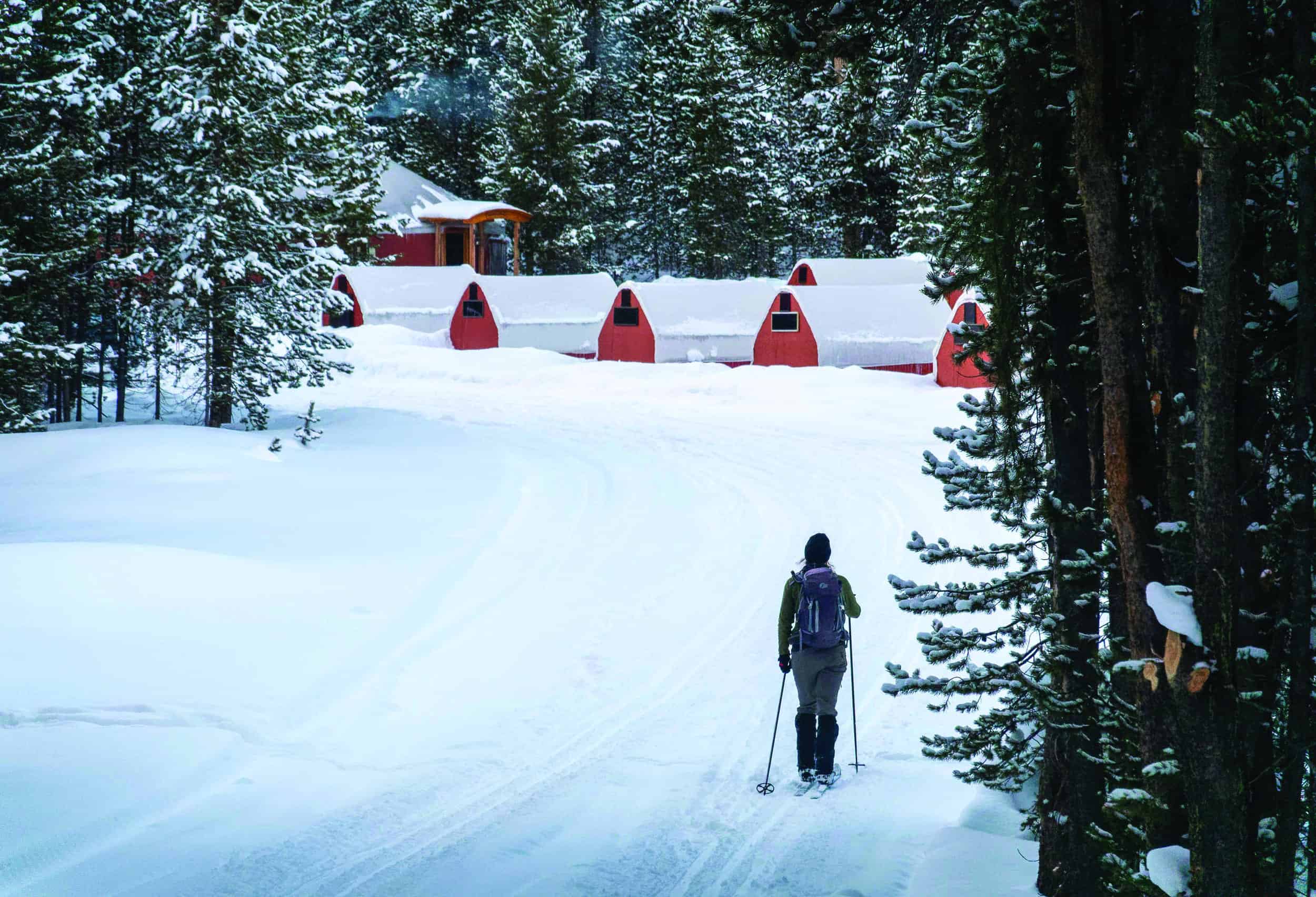
The fresh powder is about as deep as the spaces between the trunks of the immature lodgepole pine trees I’m tromping through on skis: 18 inches. Breaking trail is hard work, and, because of the tightness of the trees, the trail I leave behind me looks like the path of an intoxicated penguin. Nowhere does it go straight for more than five feet. Still, there is nothing else I’d rather be doing. For the first time in my 26 years exploring Yellowstone, I have a sense of what the park felt like to its earliest white explorers. With the exception of my fellow adventurer, Piper Gillard, a guide with Yellowstone Expeditions, I haven’t seen another human since a snowcoach dropped us off at the Cygnet Lakes trailhead several hours ago. Skiing into the forest—here thick with 20- to 30-foot tall lodgepole pines growing back after the area was burned by wildfire in 1988—we haven’t even seen any signs of other humans. (Although there are plenty of animal tracks—ermine, pine marten, wolf, snowshoe hare, bison, and coyote.)
While Gillard and I are experiencing an as-untouched-by-man landscape as did the park’s early winter explorers, we have modern conveniences including a GPS track to follow and radio communication. We also have a delightfully cozy base camp that, just that morning, served us a breakfast of bacon, granola, and spinach-and-ham frittata and which, when we return this evening, will have a spread of charcuterie waiting. We’ll get back to camp and charcuterie from our ski tour by using the radio to summon one of the camp’s snowcoaches to pick us up along one of the park’s snow roads.
“Camp” is Yellowstone Expeditions’ Yurt Camp. Near the north rim of the Grand Canyon of the Yellowstone, the camp includes a kitchen yurt, a dining yurt, nine “yurtlets,” a bathhouse with composting toilets and foot-pump sinks, and a wood-heated sauna; and it welcomes about 15 guests at a time during its 10-week season. Guests can stay for three, four, or seven nights, and stays include transportation to and from West Yellowstone, Montana, all meals, and daily guided cross-country ski tours and snowcoach transportation to and from trailheads.
Yellowstone Expeditions’ camp is the smallest and most remote of the three winter lodging options in Yellowstone. (The other two places visitors can stay are Old Faithful Snow Lodge and Mammoth Hot Springs Hotel.) A handful of park and concessionaire employees live in Canyon Village near the yurt camp, but, aside from these, the next nearest humans are 35 miles away.
While Yellowstone was the third-most-visited national park in the country in 2021, the most recent year for which there are statistics, only about 110,000 of that year’s 4.9 million visitors came during the park’s winter season, which runs from mid-December into March. This means any winter trip to Yellowstone will be quieter and significantly less crowded than a summer trip. The yurt camp takes this one step further; here, it feels like you’ve got the park to yourself.
An example: On day one, I and 10 other guests arrive at camp in the afternoon via a five-ish hour snowcoach ride from West Yellowstone, during which we make frequent stops to look at wildlife and thermal areas and munch on snacks. After we all settle into our private yurtlets, guides take us to the north rim of the Grand Canyon of the Yellowstone. The park grooms a network of ski trails in the area, and on these it’s a couple of miles and less than a hour from yurt camp to the canyon’s rim.
“I don’t just see, but feel the falls. (It feels like there’s a vibrating cell phone between my diaphragm and the base of my ribs.)”
A snaggly incision 800 to 1,200 feet deep that starts at the base of the 308-foot-tall Lower Falls of the
Yellowstone, the tallest waterfall in the park, the canyon is one of the most visited areas of Yellowstone, in summer and winter. But we have it entirely to ourselves. The day trippers are on their way out of the park or headed back to Old Faithful Snow Lodge. It’s possible I imagine this, but, standing at Lookout Point in my ski boots—the first time I’ve been here without having to duck and weave around dozens of other spectators—I don’t just see, but feel the falls. (It feels like there’s a vibrating cell phone between my diaphragm and the base of my ribs.)
By the time I’m back at camp and pinning my sweaty ski clothes up to dry on lines hanging above the king-size bed that takes up the majority of my yurtlet, the vibrating is gone, but my sense of awe is not.
Another day we ski in one big group into Pelican Valley. Just north of Yellowstone Lake, Pelican Valley is where, in 1901, the last 23 bison in the park hid out from hunters. When we ski across the valley, there are two small groups of bison around, one on either side of an open expanse the size of many football fields. A park law states you must keep a distance of 25 yards from bison, but the guides interpret this as a minimum. “If an animal is reacting to you, you’re too close,” Gillard says. We are able to ski between the two herds without getting closer than 600 yards to either and without any of the hulking beasts giving us so much as a sideways glance. We stop for lunch—sandwiches made back at yurt camp that we carry in small day packs—on a mossy hillside lightly steaming from unseen underground thermal activity. We return to the snowcoaches via a slightly different route than the one we took into the valley. The total number of other people that aren’t part of yurt camp I see all day? Zero.
It’s my last full day at the yurt camp when I get Gillard as a private guide and we do our tromping through the trees. After three days of skiing, the other guests, several of whom have never before cross-country skied, opt to stay close to camp. “I want to feel the wildness of Yellowstone,” I tell Gillard. She says she’s got the perfect tour for us. Indeed.
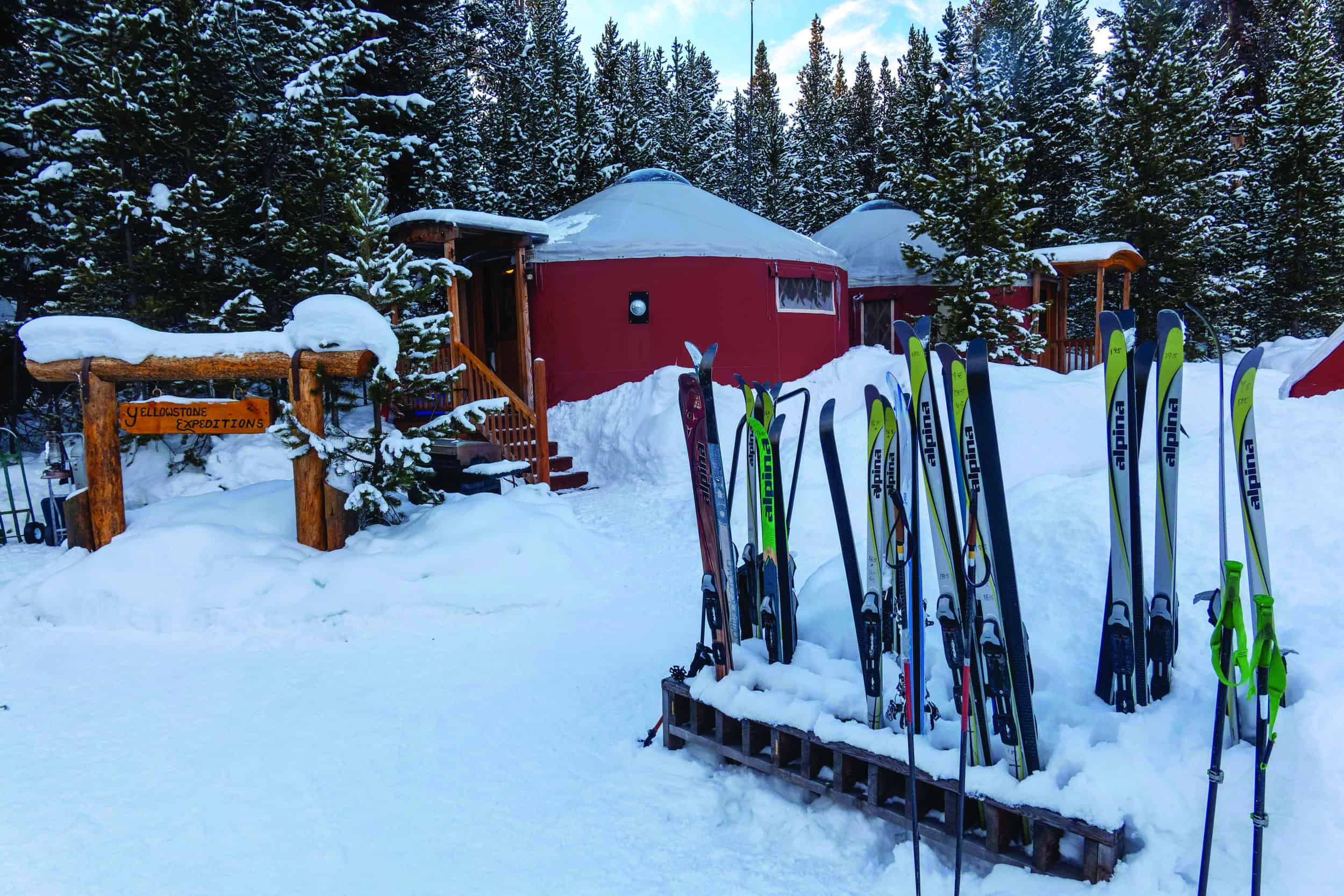
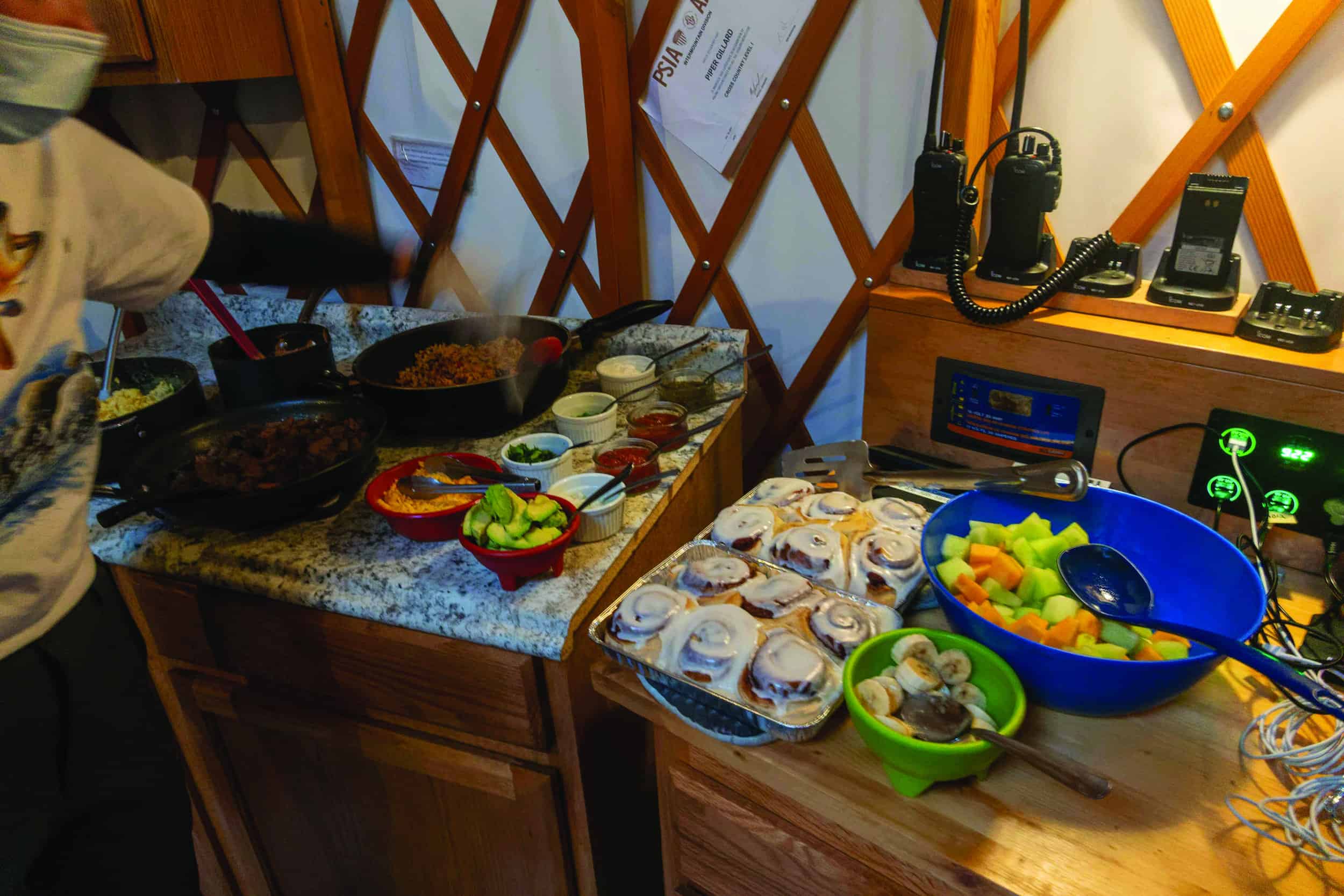
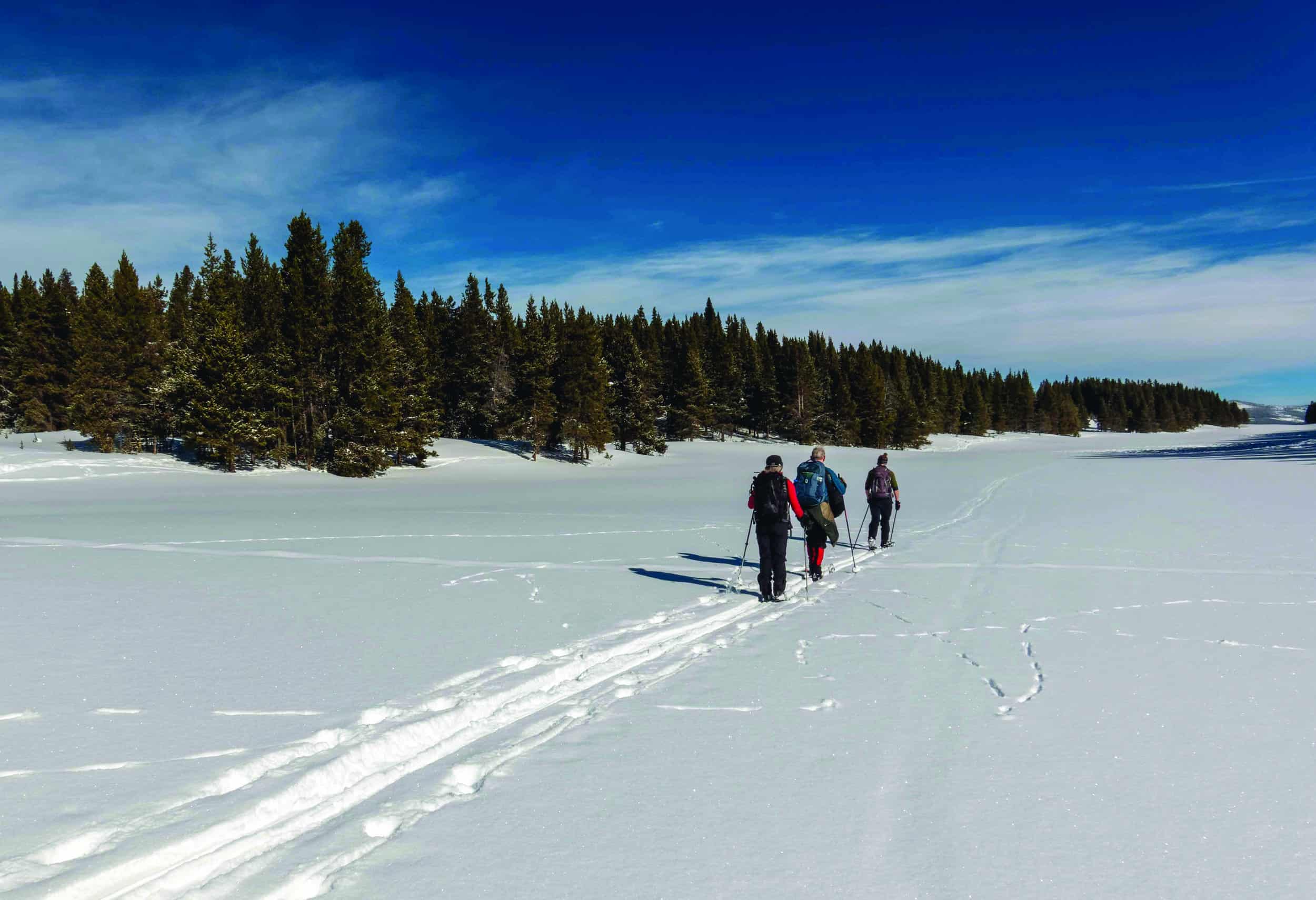
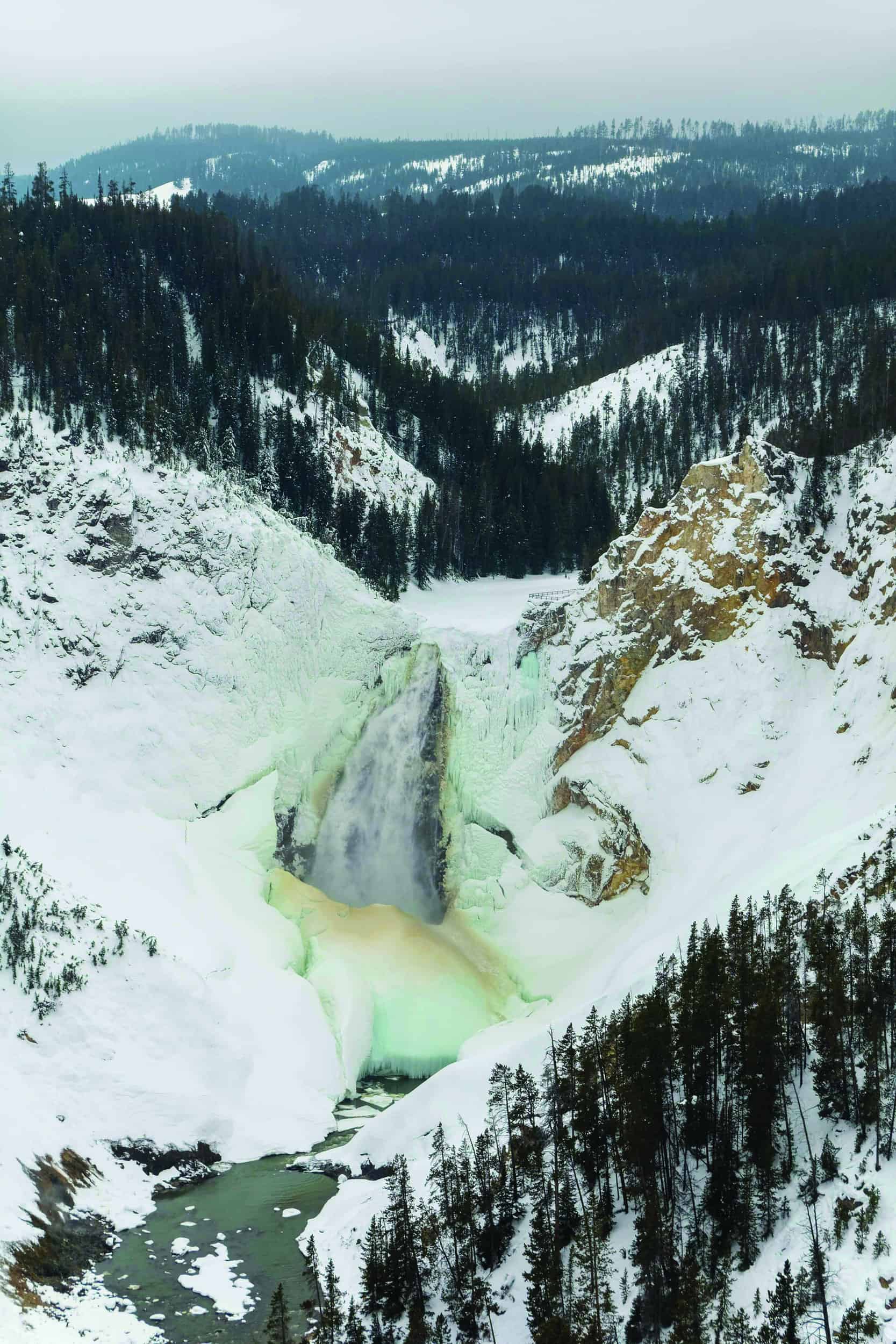
The Earliest Winter Expeditions into Yellowstone
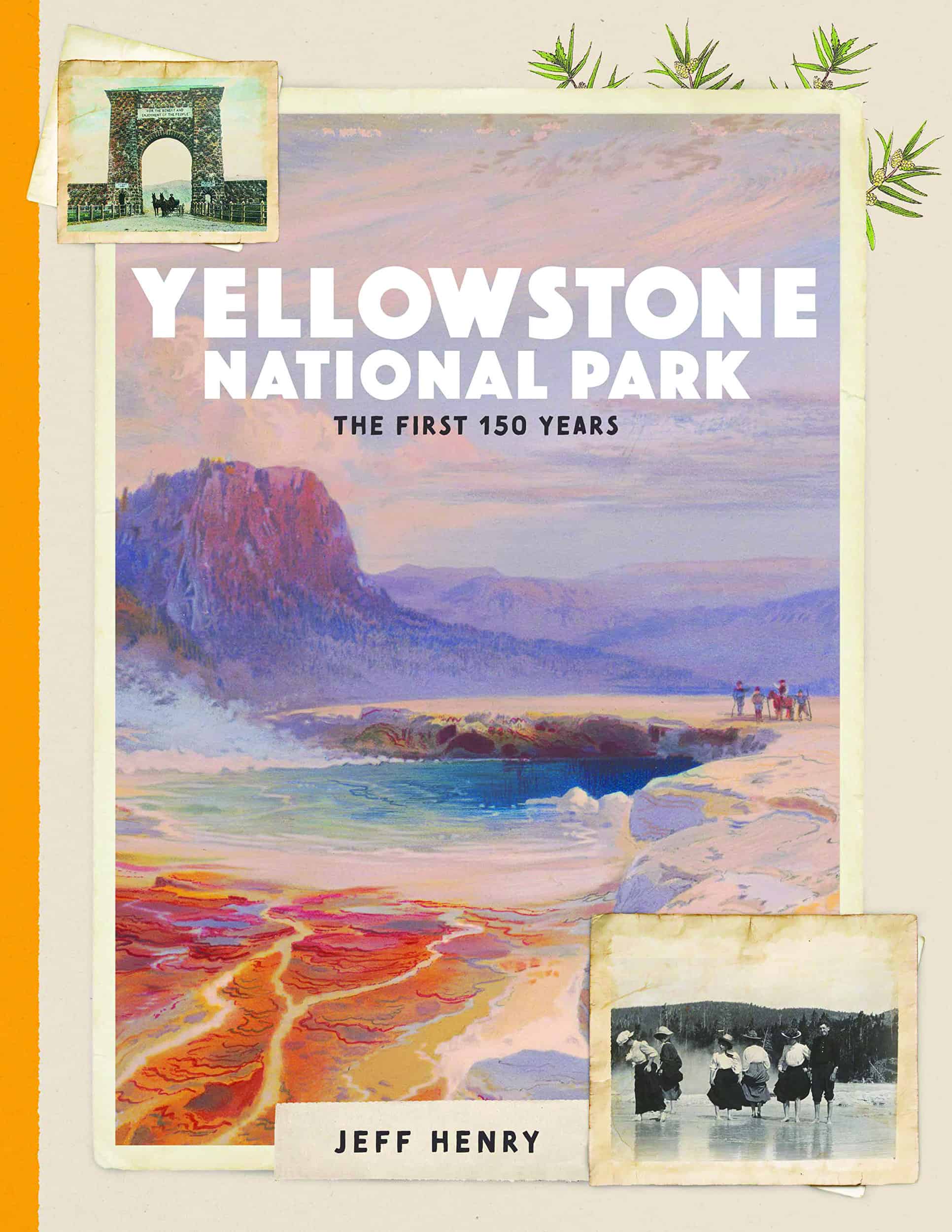
The first official organized exploration by whites of what is today Yellowstone was the Raynolds Expedition of 1859 and 1860. The first winter expedition into the park was in 1876–77, and was, as Jeff Henry writes in his fabulous 2022 book Yellowstone The First 150 Years, “ill-advised and ill-fated from the start.” It wasn’t until January of 1887 that a group of explorers again braved Yellowstone’s winter. It’s difficult to call that expedition a resounding success, but it was more successful than the one a decade earlier. Led by Frederick Schwatka, who had previously explored in the Arctic and rafted 1,300 miles down the Yukon River from Chilkoot Pass to the Bering Sea, a party of more than one dozen men left Mammoth on January 5, 1887 on snowshoes and skis and pulling sleds laden with gear and supplies. They reached Norris on January 7, and the two days it took them to get there was long enough to convince the majority of the group, including Schwatka, that Yellowstone in winter was a bad idea and the only sane thing to do was return to Mammoth. A much-reduced group did continue on and visited the Lower and Upper Geyser Basins, Yellowstone Falls, and Mouth Washburn. On the flanks of the latter, they were trapped by a blizzard for 72 hours and thought death imminent. They survived though, and, 29 days and about 200 miles after departing Mammoth, returned to the park’s headquarters. Photographer Frank Jay “F. Jay” Haynes was among this group and, despite temperatures never rising above zero degrees Fahrenheit—the group’s coldest day was 52 degrees Fahrenheit below zero—he managed to take 42 images; these were the first ever photographs of the park in winter.
Details
Yellowstone Expeditions’ Yurt Camp is open from December 22, 2022 until March 9, 2023. This winter is its 40th season. Rates for a three-night trip start at $2,000/person for double occupancy and $2,400/person single occupancy, four-night trips start at $2,400 for double occupancy and $2,800 for single occupancy, seven-night trips start at $3,400 for double occupancy and $3,800 for single
occupancy; 406/646-9333, yellowstoneexpeditions.com JH

